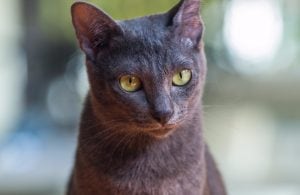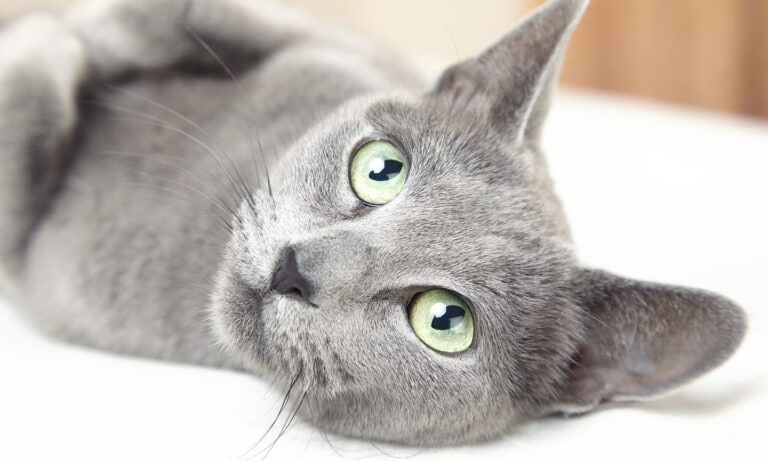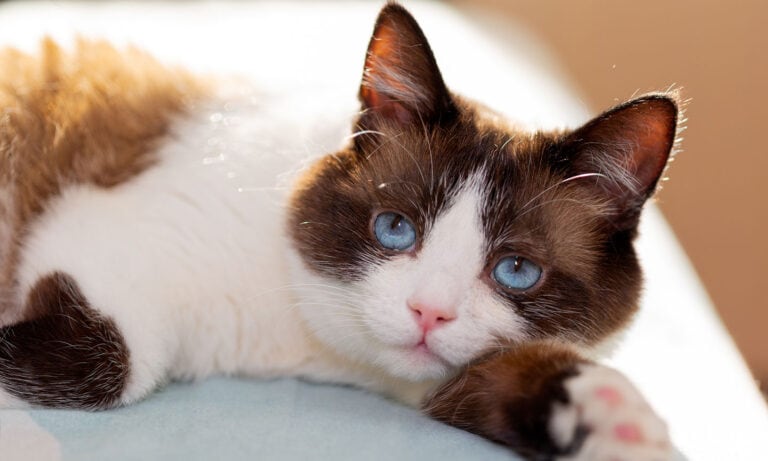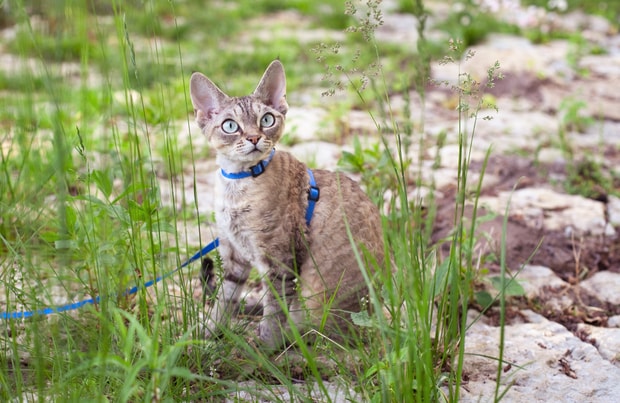We all believe our own cats are the world’s smartest, even if they haven’t scored a scholarship to Harvard. So, we turned to Joan Miller, chair of outreach and education at the Cat Fanciers’ Association (CFA), for her take on the cat world’s smartest breeds.
Miller stresses that all cats are “capable of learning tricks, harness-leash walking or household rules.” She mentions that cats also “have the ability to relate words to hand gestures.” And while cats will adapt their natural behaviors to training, in the end, cats always “want some control and power to make choices.”
Abyssinian
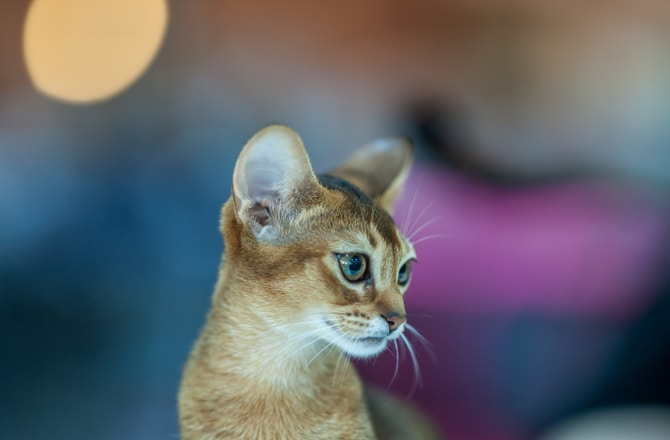
via Shutterstock
The Abyssinian’s distinctive sleek profile, with large ears and almond-shaped eyes, resembles the ancient cats of Egypt. Miller calls the breed’s communication skills, non-vocal in particular, extremely high, and says that they thrive on receiving and giving affection.
Thanks to the Aby’s excellent memory and learning capacity, he’ll know where toys are hidden and how to open doors. They’re also nurturing. Miller once brought an unconscious bird into her home, and her male Aby licked its face,seemingly trying to make the bird feel better. “This made me realize his lack of real predatory instinct,” she says. “[He knew] the bird was a creature that needed nurturing.”
Siamese
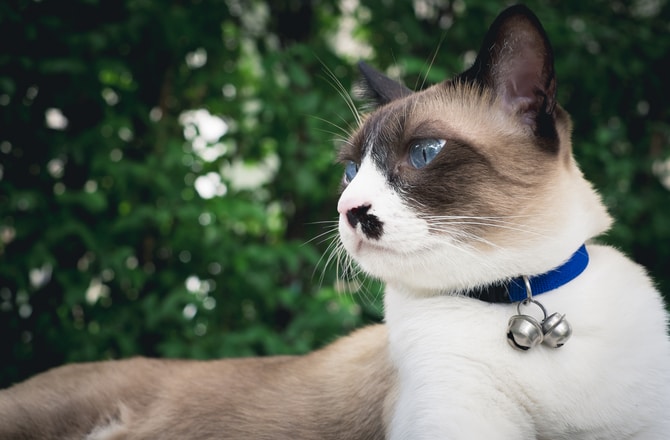
via Shutterstock
The familiar Siamese, known for his coat’s contrasting color ‘points’ and brilliant blue eyes, is a great communicator, as any Siamese cat parent can attest. “They’re known for their ability to carry on ‘conversations’ and have strong body language,” Miller says. Adaptable and easy to train in household rules and walking on a leash, Siamese cats are outgoing, even with strangers. They exhibit self-confidence and a sense of power.
With the ability to discern and foresee consequences, Siamese also have excellent memories and are skilled at recalling where treats are kept—they’ll open drawers and cabinets to get what they want.
Scottish Fold
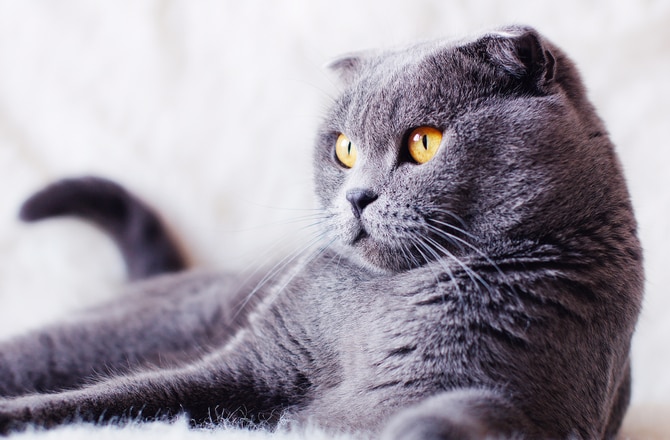
via Shutterstock
The Scottish Fold’s endearing ‘teddy bear’ ears and pixie-like expression are features that instantly charm those who meet this cute, intelligent breed. Confident and adaptable, Miller calls the Scottish fold a quick learner that will fetch balls and walk on a leash and harness, all without expecting a treat as a reward!
“Folds simply enjoy doing fun things with people, and seem to have an unusually good rapport and understanding of anything they perceive as an interesting game,” she says. Quiet with superb non-verbal skills, the Scottish Fold is famed for its adjustment to new surroundings and people, and its enjoyment of travel.
Persians
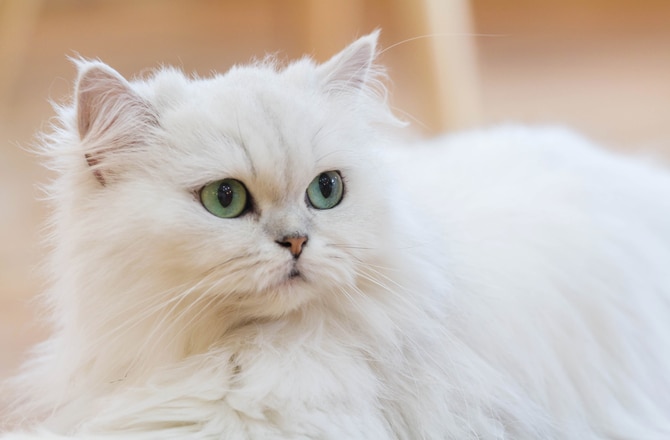
via Shutterstock
With a luxurious coat and big gentle eyes, the Persian is always a show-stopping breed that enjoys our admiration. “Persians seem to know how gorgeous they are,” Miller says.
Displaying a calm, dignified presence, Persian cats are also extremely responsive to learning, especially the word ‘no.’ Sensitive and cautious, Persians dislike harsh, loud noise, and if a door to the outside is open, they won’t dart out as many cats would, but will peek first to check on the presence of danger. Miller describes Persians as “quiet communicators” who like to wait for a sign from their humans that it’s ok to sit next to them.
Cornish Rex

via Shutterstock
The uniquely styled Cornish Rex is a genial, fun-loving breed. These cats have “high energy and always looking for activity with humans, other cats, dogs and children,” says Miller.
The Cornish Rex’s craving for human attention makes him eager to learn and adapt, viewing all new situations as challenges to be met and mastered. This cat’s communication skills, both vocal and non-vocal, are exceptional, and he’s confident in new surroundings, making the Cornish Rex an excellent traveler. Agile and graceful, this is a breed that won’t upend the shelf lined with fragile ceramics or the photos clustered on your tabletops.
Turkish Angora
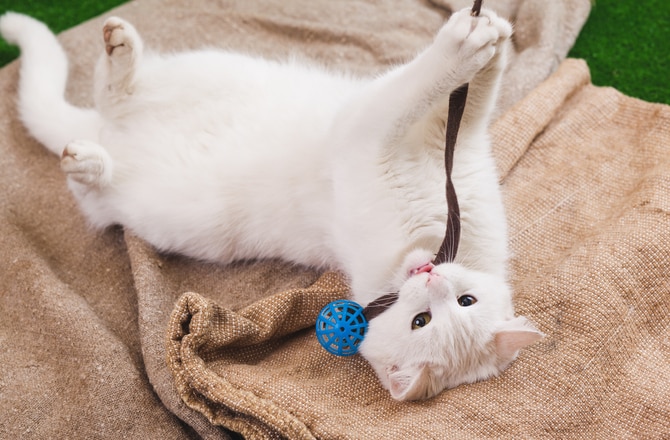
via Shutterstock
Silky and elegant, this breed arrived in the US in the 1950s, and still has strong predatory instincts to go with its high activity level. MIller calls them fast and clever and always eager to play. She recalls that when judging Turkish Angoras in cat shows, she has often had to relinquish a toy to an Angora, who refused to give it back.
Highly alert and strong-willed, the Turkish Angora will easily adapt to your household, but be aware, that he’s also mischievous. These cats are “smart enough to open cabinet doors and drawers,” says Miller. “They find amusement in seeing things fall to the floor.”
Japanese Bobtail
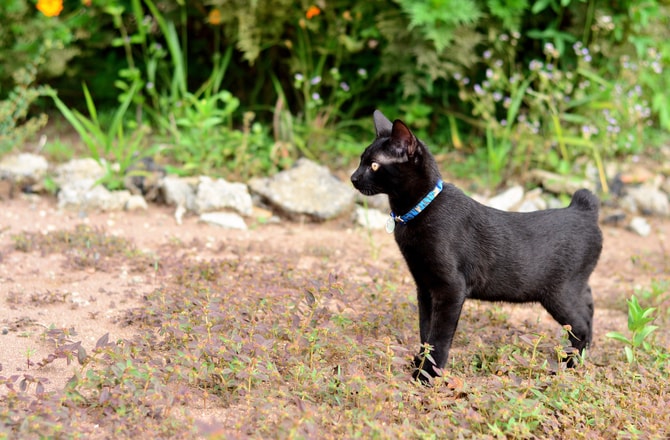
via Shutterstock
With its longer hind legs and a distinctive stub tail, this breed has it all when it comes to cat intelligence criteria. History shows Japanese Bobtails were treasured pets in Japan at least 1000 years ago, pampered and indoor-only, until 1602 when an emperor decreed they all had to become street cats to kill the vermin destroying the silk industry. The feline survivors were the most skilled predators, and even today, the Japanese Bobtail remains inquisitive, adaptive, active and playful.
Miller says this breed easily learns to do tricks, and thrives on human attention and any challenges that are fun with people. “They’re real acrobats when it comes to jumping high and seem to know how impressive their antics are,” she says. Miller also adds that Japanese Bobtails shine in agility competitions.
Korat
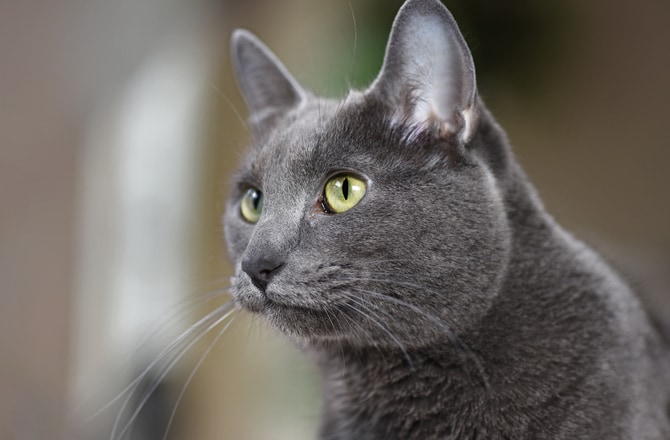
via Shutterstock
The shimmering silver-blue Korat is one of the oldest, rarest breeds, cherished in the ancient Kingdom of Siam/Thailand for its intelligence. MIller calls the Korat a great observer. “They’ll often attempt to mimic human activities, such as turning on faucets or opening cabinet doors,” she says.
True homebodies, Korats like to be with their own families, because they’re cautious about new places and experiences. Extremely sensitive to sounds, they’re not vocal themselves except when they have something important to say.
Korats have a keen ability to discern, and will adapt once they decide everything is safe. Miller says a Korat belonging to friends with a sailboat regularly demonstrates this ability. “When they’re at sea, the cat is kept in the cabin. She’ll pick up her leash and harness and walk to a porthole, letting her owners know she’d like to join them on deck,” says Miller. “She knows she must be on the leash to be safe.”
Kathy Blumenstock is owned by cats, loved by dogs, writes about both, and still longs for a horse.
Share:
